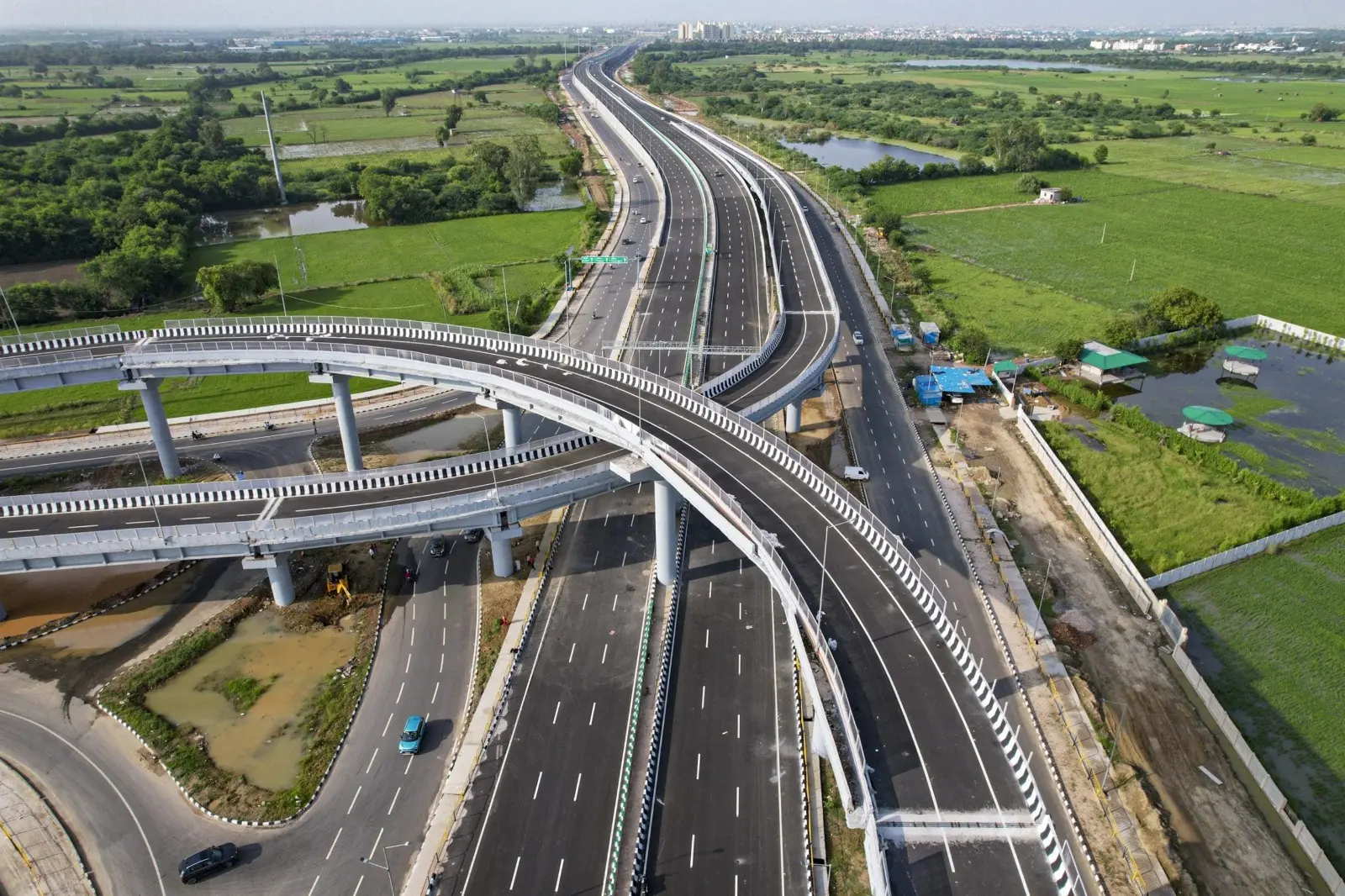Urban Extension Road-II: The New Growth Engine for NCR Real Estate
18, August 2025

Prime Minister Narendra Modi inaugurated the Delhi section of the Dwarka Expressway and the Urban Extension Road-II project in NCR on Sunday, August 17. The projects are worth a total of ₹11,000 crore. The Urban Extension Road-II (UER-II) is developed under the comprehensive plan to decongest the capital.
The National Capital Region is in the middle of a connectivity reset, and at the centre of it is Urban Extension Road-II (UER-II)—a 75+ km, access-controlled corridor designed to function as Delhi’s “third ring road” on the western side. Conceptualized under the Delhi Master Plan and executed by NHAI, UER-II links the region’s busiest national highways and creates faster, signal-free access between North & West Delhi, Dwarka/IGI Airport, Gurugram (Gurgaon) and onward corridors. In simple terms: this is the road that stitches together demand and supply in NCR real estate—residential, commercial, and warehousing—unlocking new micro-markets and re-rating existing ones.
What exactly is UER-II :
UER-II (NH-344M) is a 6-lane (with service lanes) grade-separated expressway that arcs across outer Delhi. The main alignment starts near NH-44 (old NH-1) around Bankoli/Alipur, runs via Rohini, Mundka, Najafgarh and Dwarka, and ties into NH-48 near Mahipalpur /Delhi–Gurgaon Expressway. Two spurs further extend connectivity: one from Bawana toward Sonipat and another toward Bahadurgarh (NH-09)—a configuration that gives outer-ring functionality and diverts heavy traffic away from inner Delhi choke points like Mukerba Chowk and Dhaula Kuan. Recent updates confirm delivery in multiple packages with significant lengths in both Delhi and Haryana, strengthening airport access and easing pressure on the Inner/Outer Ring Roads.
UER-II matters for property markets :
Real estate value in NCR follows the “Connectivity Dividend.” As travel time drops and route optionality rises, absorption improves, land banks appreciate, and new launches cluster near interchanges. With UER-II now integrated alongside the Dwarka Expressway (NH-248BB), a synchronized network effect is visible: improved airport access for Gurgaon and Dwarka, quicker north-south movement for Sonipat and Kundli, and safer, faster logistics for industrial/warehouse belts around Bahadurgarh–Najafgarh–Farrukhnagar–Pataudi. Multiple market-watch studies and reportage point to price hardening along Dwarka Expressway over the past 4–5 years, accelerated by expressway openings including UER-II.
Gurgaon & Dwarka Expressway - Premiumization and price resilience :
Gurgaon (Gurugram) already led NCR’s Grade-A housing and office market thanks to the NH-48 spine, Cyber City, Udyog Vihar and the Southern Peripheral Road (SPR). The Dwarka Expressway added a new luxury corridor—especially sectors 102–113 and 83–99—by promising decongested access to Dwarka/Delhi and IGI Airport. With UER-II now in play, residents and businesses gain a second, ring-like approach to Delhi and northern corridors, reducing dependence on the NH-48 bottleneck and Sohna Road.
Evidence on the ground backs this. Recent data shows values along Dwarka Expressway have almost doubled since 2020 as the corridor neared completion and complementary links like UER-II came online. This momentum is likely to sustain as commuting to Dwarka, Central/West Delhi, and IGI becomes smoother and as large integrated townships deliver social infrastructure. For developers, mixed-use projects and high-street retail near interchanges should see strong footfalls; for investors, 2–3 bedroom apartments in established sectors and low-density independent floors in newer sectors offer a balanced risk-reward.

Sonipat & Kundli: Value migration and warehousing upswing :
The Bawana–Sonipat spur is a quiet game-changer. By tying outer North/West Delhi into NH-44 and onward to Sonipat/Kundli, UER-II effectively halves airport and South-West Delhi commute times for northern suburbs, according to market commentary and inauguration coverage. This puts Sonipat on the map for buyers priced out of Gurgaon/Noida, while logistics players see better turn-around times to Delhi markets and the Western Peripheral Expressway (KMP). Reports indicate land and apartment prices in Kundli/Sonipat have surged sharply in recent years, yet remain 30–50% below Gurgaon, leaving headroom as social infra catches up. Expect plotted developments, independent floors, student housing (due to education hubs), and warehousing parks to drive the next leg of growth.
Farukhnagar & Pataudi: Industrial corridors meet residential catchments :
To Gurgaon’s west and south-west, Farukhnagar and Pataudi have quietly transformed from agrarian towns to logistics/industrial hotbeds, helped by proximity to KMP, Delhi–Rewari routes, and Dwarka Expressway sectors. UER-II strengthens this mosaic by diverting freight from inner Delhi and enabling faster linkages to IGI/Dwarka and NH-48, improving just-in-time supply chains for third-party logistics, e-commerce and light manufacturing. The residential counterpart—plotted townships under DDJAY, low-rise independent floors, group housing along sector roads—benefits as blue-collar and mid-management demand deepens.
For Farukhnagar, the draw is land availability and industrial zoning; for Pataudi, it is the blend of quieter suburban living with access to Gurgaon jobs via Dwarka Expressway/SPR. As commute predictability improves under UER-II, these markets can capture:
- End-user buyers seeking ticket sizes for 2/3 BHK floors.
- Investors targeting rental yield from workforce housing.
- Small warehousing (10,000–50,000 sq ft) feeding last-mile distribution toward Gurgaon and Delhi.
Benefits—Whom and How :
Homebuyers
- Time savings: Alternate, ring-like routes to IGI Airport, Dwarka, West/North Delhi without cutting through central congestion points.
- Option value: Ability to choose between premium addresses on Dwarka Expressway and value markets like Sonipat, Farukhnagar, Pataudi with credible commute times.
Developers
- New land corridors: Interchanges along UER-II create gateway locations for townships, schools, healthcare and retail.
- Faster sales velocity: Price bands from mid-income to premium can co-exist within a 30–40 km radius as commuting evens out.
Investors/Institutions
- Warehousing & industrial: UER-II plus KMP and NH-44/NH-48 opens multi-node routing for trucking, cutting dwell times and fuel costs.
- Commercial clusters: Grade-A office satellites and flex-warehousing near interchanges to serve Gurgaon’s corporate core.
Market signals to track in 2025–27
- Absorption & pricing along Dwarka Expressway: Post-opening, a multi-year runway is expected; data already shows strong price expansion in 2020–24 with scope for further firming as social infra finishes and possession cycles peak.
- Sonipat/Kundli price catch-up: Expect affordable-to-mid segments to lead, with logistics demand anchoring employment.
- Policy & last-mile fixes: Feeder roads, service lanes, signage and enforcement along UER-II will determine the full extent of the connectivity dividend; early reports emphasize its role in decongesting Ring Roads/NH-09 and improving airport access.
- Industrial/warehouse leasing in Farukhnagar–Pataudi–Bahadurgarh belts as freight diverts from central Delhi and businesses seek predictable routing to IGI and Gurgaon.
UER-II + Dwarka Expressway = NCR’s West-North arc of growth :
With the Dwarka Expressway and UER-II inaugurated and integrated, NCR gains a redundant, resilient road grid that redistributes traffic and shortens cross-regional commutes. This strengthens Gurgaon’s premium housing story, accelerates Sonipat/Kundli’s affordability narrative, and deepens the industrial-residential synergy in Farukhnagar and Pataudi. The knock-on effect is already visible in price trajectories, new launches, and logistics leasing, and commentary from government/market sources consistently frames these corridors as catalysts for outer-Delhi and Haryana growth. Expect a multi-year upcycle driven by connectivity, employment, and migration toward well-planned, access-rich suburbs.
